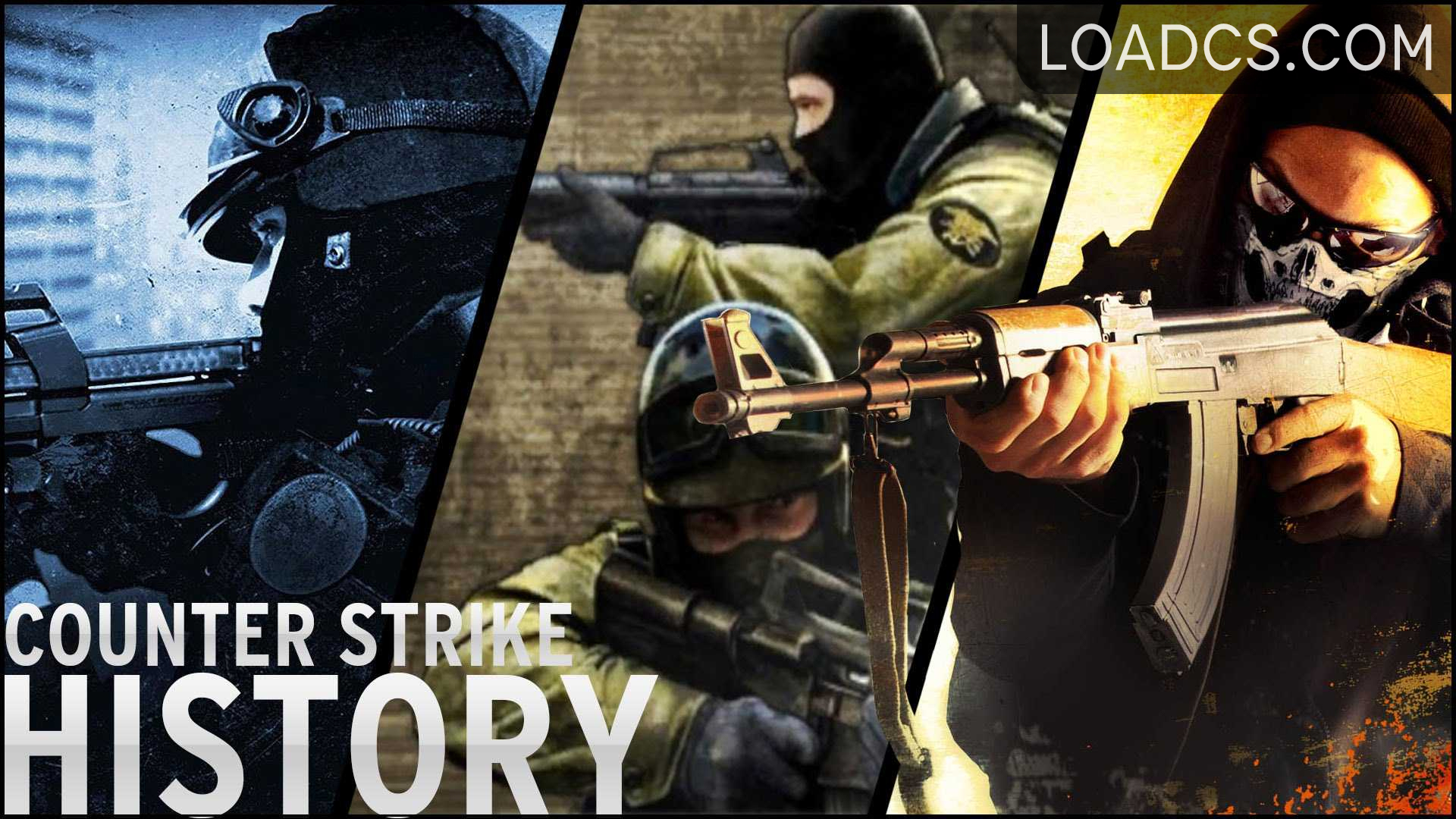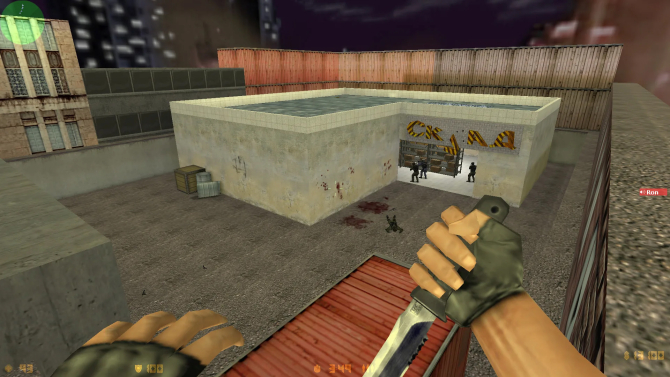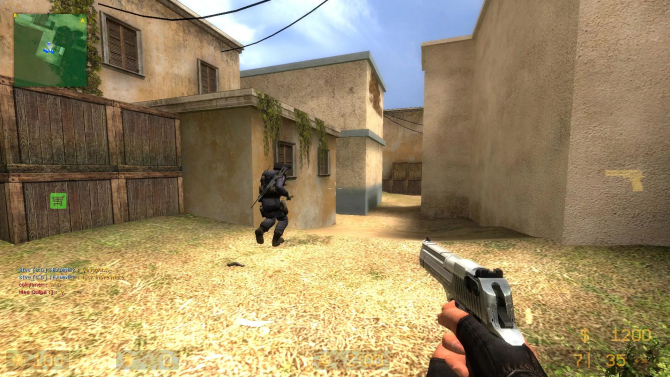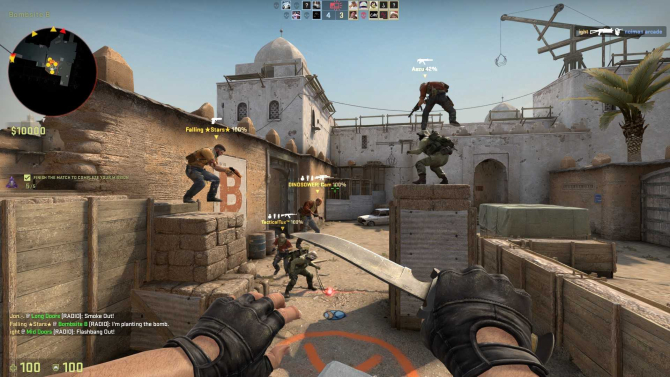The History of Counter-Strike
Counter-Strike (CS) is one of the most popular first-person shooter (FPS) games in the world and has been a staple of the gaming industry since its release in 1999. Over the past two decades, CS has evolved significantly, with new versions, updates, and improvements making it one of the most successful and beloved FPS games of all time. In this article, we'll explore the history of Counter-Strike, from its humble beginnings to its current status as a major esport and gaming phenomenon.
Origins of Counter-Strike
The original Counter-Strike game was developed as a modification (mod) for the popular FPS game Half-Life. It was created by Minh Le and Jess Cliffe, who were students at the time, and released as a beta version in 1999. The mod quickly gained a loyal following, with players impressed by its innovative gameplay mechanics and fast-paced action.
The original version of Counter-Strike featured two teams: terrorists and counter-terrorists. The terrorists had to complete objectives such as planting bombs or taking hostages, while the counter-terrorists had to stop them. The game was played in rounds, with each team switching roles after each round.
The success of the beta version of Counter-Strike led to the game's official release in 2000. Valve Corporation, the creators of Half-Life, purchased the rights to the game and worked with Le and Cliffe to improve and refine it. The game quickly gained popularity, with players drawn to its realistic gameplay, teamwork-oriented mechanics, and intense competition.
In 2004, Valve released Counter-Strike: Condition Zero, which was the first stand-alone version of the game. It featured updated graphics, new game modes, and improved artificial intelligence. However, it received mixed reviews from players and critics, with some complaining that it lacked the fast-paced action of the original game.
In 2005, Valve released Counter-Strike: Source, which was a complete remake of the original game using the Source engine, which powered the popular Half-Life 2. The game featured updated graphics, improved gameplay mechanics, and new maps. It was also the first version of the game to be available on the Steam platform, which made it more accessible to players worldwide. The success of Counter-Strike: Source led to the game's inclusion in the Electronic Sports World Cup (ESWC) in 2005, which was the first major international esports tournament. The tournament featured top CS: Source teams from around the world, and the winning team, fnatic, took home a prize of $25,000.
Counter-Strike: Global Offensive
In 2012, Valve released Counter-Strike: Global Offensive (CS:GO), which was a complete overhaul of the game using the latest technology and graphics. The game featured updated gameplay mechanics, new weapons, and improved matchmaking and anti-cheat systems. It also introduced new game modes, such as Arms Race and Demolition, which added variety and excitement to the gameplay.
CS:GO quickly became a major hit, with millions of players logging on to play the game every day. The game's popularity also led to the creation of a thriving esports scene, with numerous professional teams and tournaments emerging worldwide.
The Future of Counter-Strike
Counter-Strike has been around for over two decades, and its popularity shows no signs of slowing down. Valve Corporation continues to support the game with updates and new content, and the CS:GO competitive scene continues to thrive with new tournaments and events emerging regularly.
In recent years, CS:GO has faced some challenges, including concerns around cheating and player behavior. Valve has responded by implementing stricter anti-cheat measures and introducing a new Trust Factor matchmaking system, which matches players based on their behavior in-game. These efforts have helped to improve the overall experience for players and maintain the game's competitive integrity. Looking ahead, the future of Counter-Strike looks bright. Valve continues to support the game with regular updates and new content, including new maps, weapons, and game modes. The esports scene for CS:GO is also set to grow, with more tournaments and events planned for the coming years.
In addition, there are rumors that Valve is working on a new version of the game, possibly using the latest technology and graphics. While there has been no official announcement from Valve, many fans are excited about the possibility of a new CS game.
Conclusion
Counter-Strike is a gaming phenomenon that has stood the test of time. From its humble beginnings as a mod for Half-Life, the game has evolved into a major esports title and one of the most popular FPS games in the world. With its innovative gameplay mechanics, intense competition, and loyal fan base, Counter-Strike is set to continue its success for years to come.
Origins of Counter-Strike
The original Counter-Strike game was developed as a modification (mod) for the popular FPS game Half-Life. It was created by Minh Le and Jess Cliffe, who were students at the time, and released as a beta version in 1999. The mod quickly gained a loyal following, with players impressed by its innovative gameplay mechanics and fast-paced action.
The original version of Counter-Strike featured two teams: terrorists and counter-terrorists. The terrorists had to complete objectives such as planting bombs or taking hostages, while the counter-terrorists had to stop them. The game was played in rounds, with each team switching roles after each round.
The success of the beta version of Counter-Strike led to the game's official release in 2000. Valve Corporation, the creators of Half-Life, purchased the rights to the game and worked with Le and Cliffe to improve and refine it. The game quickly gained popularity, with players drawn to its realistic gameplay, teamwork-oriented mechanics, and intense competition.
«In 2004, Valve released Counter-Strike: Condition Zero, which was the first stand-alone version of the game»
Counter-Strike: Condition Zero and SourceIn 2004, Valve released Counter-Strike: Condition Zero, which was the first stand-alone version of the game. It featured updated graphics, new game modes, and improved artificial intelligence. However, it received mixed reviews from players and critics, with some complaining that it lacked the fast-paced action of the original game.
In 2005, Valve released Counter-Strike: Source, which was a complete remake of the original game using the Source engine, which powered the popular Half-Life 2. The game featured updated graphics, improved gameplay mechanics, and new maps. It was also the first version of the game to be available on the Steam platform, which made it more accessible to players worldwide. The success of Counter-Strike: Source led to the game's inclusion in the Electronic Sports World Cup (ESWC) in 2005, which was the first major international esports tournament. The tournament featured top CS: Source teams from around the world, and the winning team, fnatic, took home a prize of $25,000.
Counter-Strike: Global Offensive
In 2012, Valve released Counter-Strike: Global Offensive (CS:GO), which was a complete overhaul of the game using the latest technology and graphics. The game featured updated gameplay mechanics, new weapons, and improved matchmaking and anti-cheat systems. It also introduced new game modes, such as Arms Race and Demolition, which added variety and excitement to the gameplay.
CS:GO quickly became a major hit, with millions of players logging on to play the game every day. The game's popularity also led to the creation of a thriving esports scene, with numerous professional teams and tournaments emerging worldwide.
«Counter-Strike has been around for over two decades, and its popularity shows no signs of slowing down»
The CS:GO competitive scene has continued to grow over the years, with major tournaments such as the ESL Pro League, the Intel Extreme Masters, and the DreamHack Masters attracting top teams from around the world. The prize pools for these tournaments have also increased significantly, with some tournaments offering millions of dollars in prize money.The Future of Counter-Strike
Counter-Strike has been around for over two decades, and its popularity shows no signs of slowing down. Valve Corporation continues to support the game with updates and new content, and the CS:GO competitive scene continues to thrive with new tournaments and events emerging regularly.
In recent years, CS:GO has faced some challenges, including concerns around cheating and player behavior. Valve has responded by implementing stricter anti-cheat measures and introducing a new Trust Factor matchmaking system, which matches players based on their behavior in-game. These efforts have helped to improve the overall experience for players and maintain the game's competitive integrity. Looking ahead, the future of Counter-Strike looks bright. Valve continues to support the game with regular updates and new content, including new maps, weapons, and game modes. The esports scene for CS:GO is also set to grow, with more tournaments and events planned for the coming years.
In addition, there are rumors that Valve is working on a new version of the game, possibly using the latest technology and graphics. While there has been no official announcement from Valve, many fans are excited about the possibility of a new CS game.
Conclusion
Counter-Strike is a gaming phenomenon that has stood the test of time. From its humble beginnings as a mod for Half-Life, the game has evolved into a major esports title and one of the most popular FPS games in the world. With its innovative gameplay mechanics, intense competition, and loyal fan base, Counter-Strike is set to continue its success for years to come.
Mohamad
-
-
-
-
-
2024.05.24 [16:10]
counter-Strike
Add a comment





